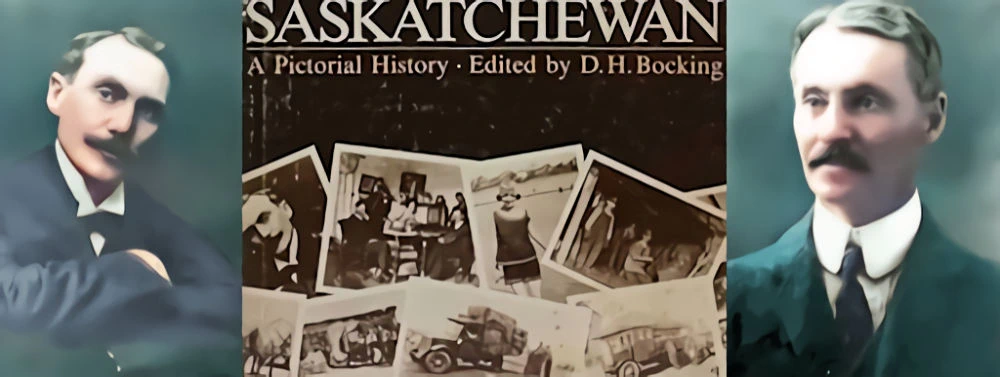


The Indians of the western plains were a roving, non-agricultural people who lived by the hunt and depended on the buffalo for most of the necessities of life. They had developed a social organization and religious beliefs appropriate to their hunting society. The horse, which the Indians acquired around 1750, became an essential part of their nomadic life, both in the hunt and as a beast of burden. While Europeans learned from the Indians, the white man's culture, brought in by the explorer, fur trader, missionary, and settler, had so great an impact on the native people that the Indian way of life was drastically changed. 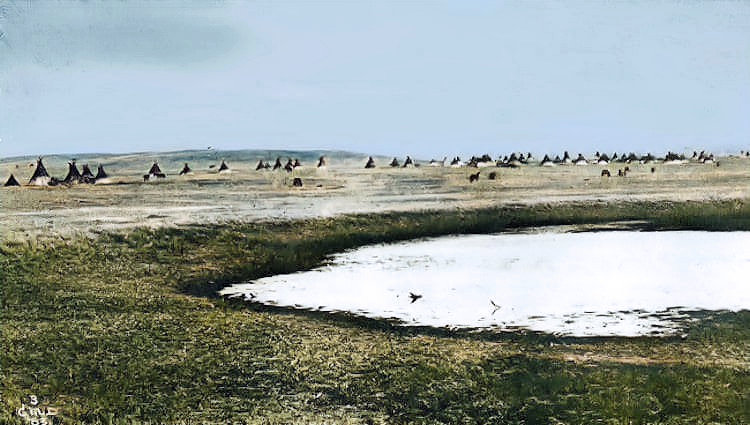
Big Bear's camp, Maple Creek, 6 June 1883. The tents were made of buffalo leather from eight to fourteen skins in size, all sewn together and cut into the correct pattern, then stretched on the same number of poles adjusted to form a cone. . . . An oval opening, nearly at the bottom of the seam is cut out to form an entrance, and to fit this, a stretched leather door is hung by strings. Some slight adjustment of the poles is necessary to make the covering tight; this is done from the inside, and the tent is ready for occupation. . . . In the centre is the fire. Robes and blankets are spread all around to sit on.
Robert Jefferson,
'memoirs' 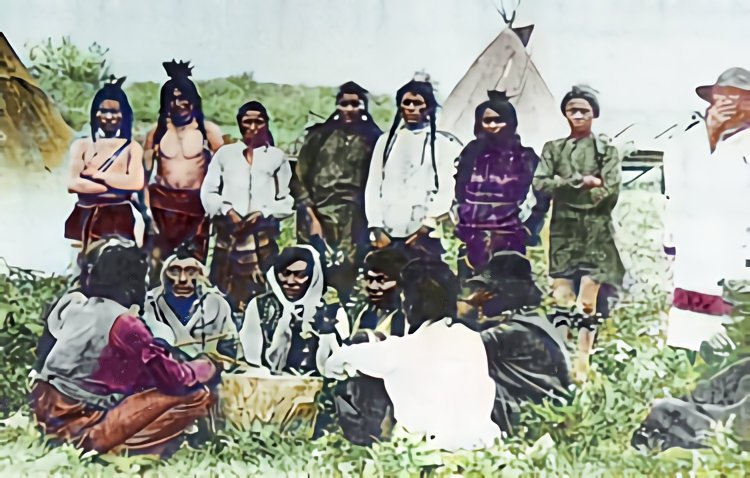
Cree Indian drummers and dancers near Moosomin, 17 June 1889.
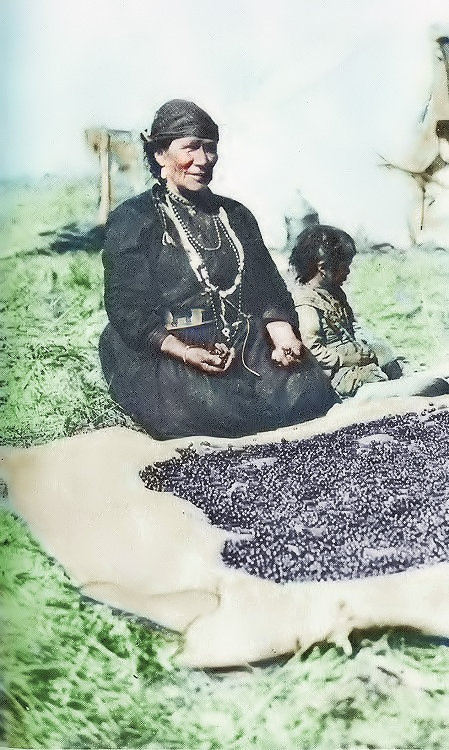
Indian woman drying saskatoon berries.
Place and date unknown. Thursday, 30 [July, 1801]. Different kinds of berries are now ripe, such as strawberries, raspberries, and what the Canadians call paires, which the Natives denominate Mi-sas-qui-to-min-uck. . . . These berries, when properly dried by the sun, have an agreeable taste and are excellent to mix with pimican. The Natives generally boil them in the broth of fat meat, and this constitutes one of their most dainty dishes and is introduced at all their feasts.
Daniel William Harmon,
Journal' 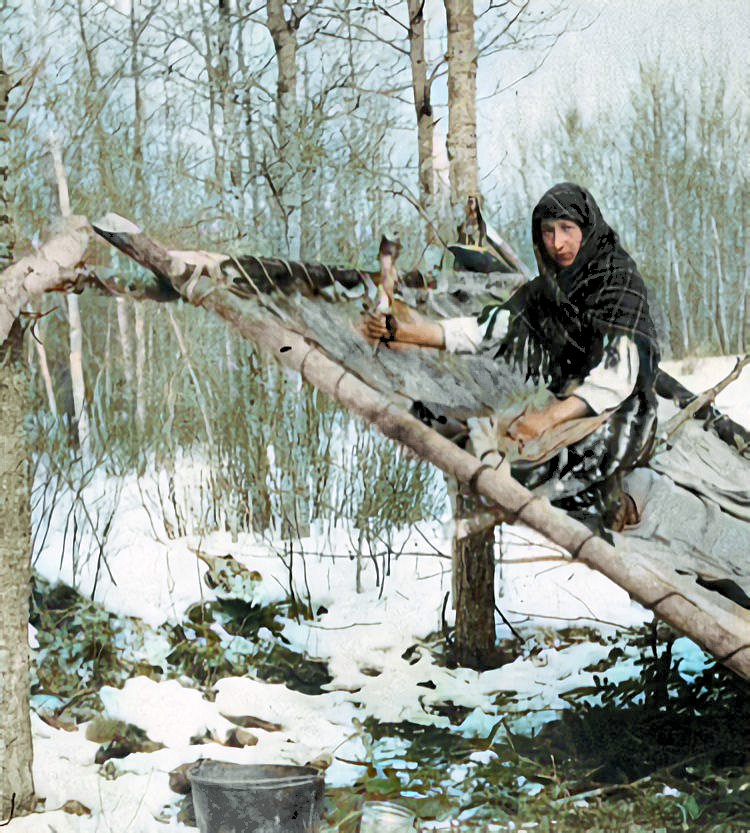
Indian woman fleshing a moose hide.
Place and date unknown. The most valuable skin which the country produces, for clothing, is that of the moose deer. It is stretched on four sticks, and one side being elevated, several women mount upon it, with sharp instruments of iron or bone (moose shin-bone) bevelled at an angle and with tooth-like notches cut into it, scraping off in their descent, the hair and adhering flesh. . . They next dry and then rub it, with a mixture of the brains and other parts of animals, after which, it is soaked in warm water and scraped, alternately, and smoked over a fire of decayed wood, which prevents it from becoming hard when it has been wet; for it absorbs water immediately. No skin is more durable or agreeable to the touch. . . .
Robert Hood
Journal' 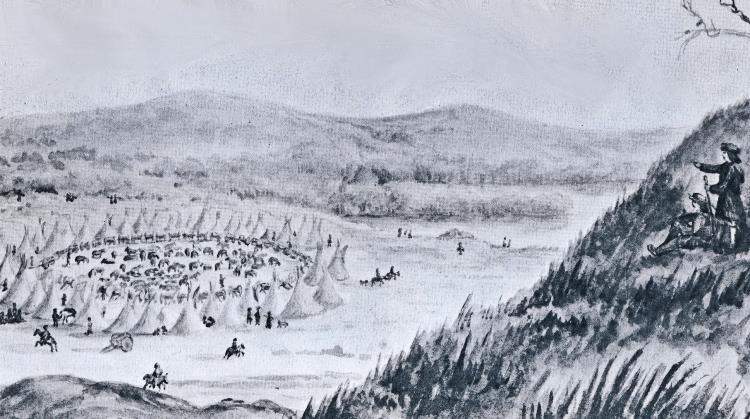
Buffalo Hunters Camp, 1858. Watercolour by G. Seton, from a sketch by W. H. Napier, based on his recollection of the Canadian government exploring expedition which toured the West in 1858. At that time, the satisfaction of physical needs depended to a large extent on the success of the buffalo hunt. Buffalo meat was a major part of the diet of the fur trader, as well as of the Indian and Metis. Hunters' camps were a colourful sight on the prairies as nomadic hunters prepared to reap the wild harvest. Here I saw my first hunting camp and a curious sight it was to me. . . . They always camp in a ring. Each hunter has on an average four or five carts. These are placed in a ring and they generally sleep under them except when lying in one place which is seldom as the refuse meat makes such an obnoxious smell that they move every three or four days. The ring here was about half a mile in circumference. Inside the ring, the horses are kept at night and grass cut and given them as the number of horses eat the ring bare in a few minutes.
W. E. Traill, 1865
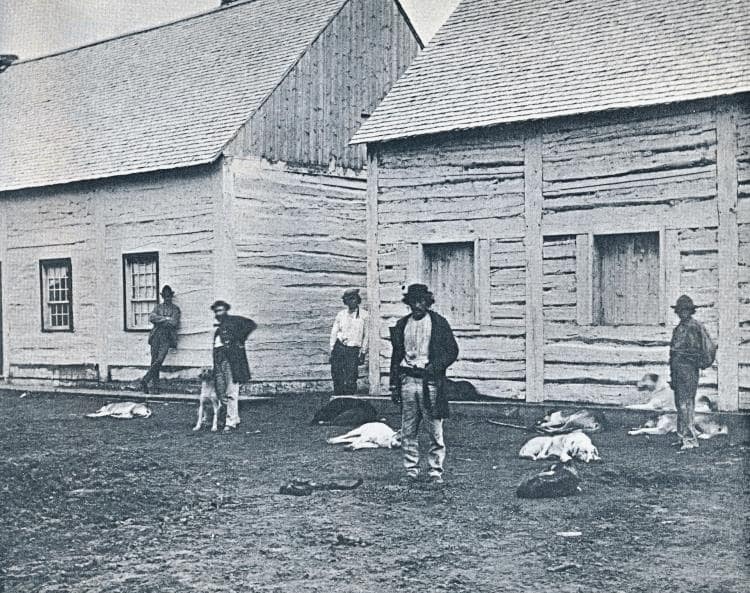
Fort Carlton, established in 1795
Fort Carlton, established in 1795, was one of many inland posts built by the Hudson's Bay Company. Located at the junction of major land and water transportation routes, the post was designed to meet the trading needs of the local Indian population. The operations of the post called for the co-operative efforts of many employees. Of great value to the post was the Metis, who served as interpreters in carrying on trade with the Indians. As settlement and agriculture pushed back the fur frontier, Fort Carlton rose to prominence as a centre for mail distribution, northern supply, conferences, and treaty payment. The fort was abandoned and accidentally burned in 1885, after serving briefly as a police post. 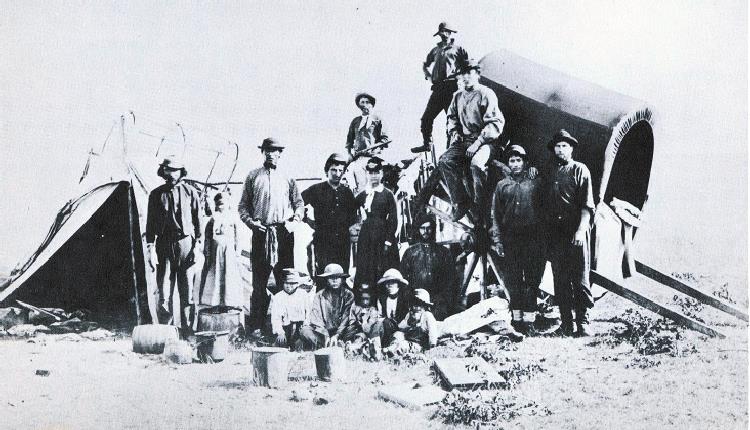
Half-Breed traders about 1872-1875.
It must be remembered that within the last few years the half-breeds have been compelled to change their mode of obtaining a livelihood. Not long ago buffalo hunting and trading with the Indians afforded them a sure and easy method of living in luxury. As the buffalo disappeared they naturally turned to freighting. Supplies for the northern country and as far west as Edmonton came in to a large extent overland from Winnipeg, hundreds of miles distant. Freight was plentiful and prices high. The loss of the buffalo was not at the time severely felt. Freighting was second nature to them, and they did it wonderfully well.
A. B. Perry, Superintendent,
North-West Mounted Police, 1887 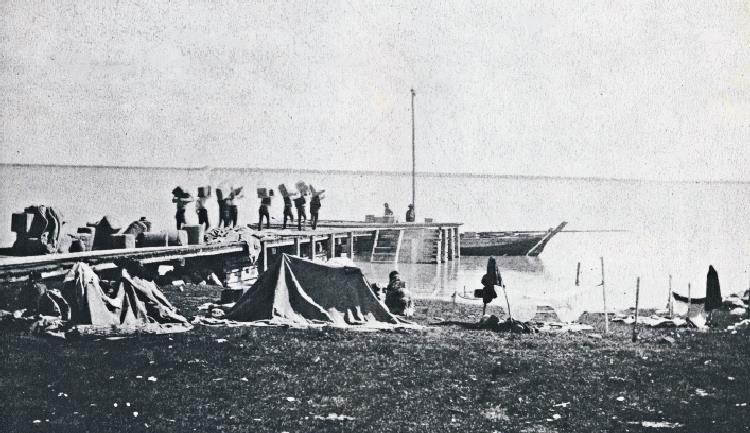
Loading Tea Chests on York Boat, Cumberland House, 1899.
The dock at Cumberland House, 1899. The men are carrying tea chests to load on board a York boat for shipment to the various posts of the Cumberland district, which in 1899 included The Pas, Cedar Lake, Grand Rapids, Pelican Narrows, Lac la Ronge, Lac du Brochet, Montreal Lake, Fort a la Come, Portage la Loche, and Green Lake. There were ten men in the boat with 10,000 lbs. of freight. This freight used to come from Prince Albert for the Hudson's Bay Store. Then it was taken up north by these men for $1.50 a day and a ration of flour, tea and salt pork. . . It took them 22 days to go from Cumberland House to Pelican Narrows and back to Cumberland.
Joe Pelly,
A History of Cumberland House 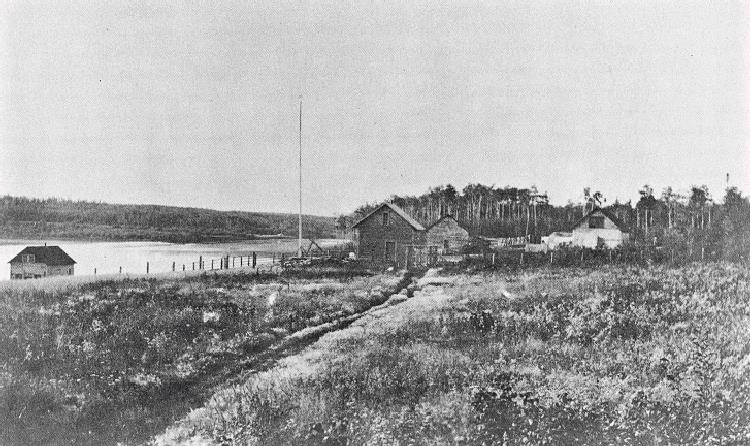
Portage La Loche, 1908.
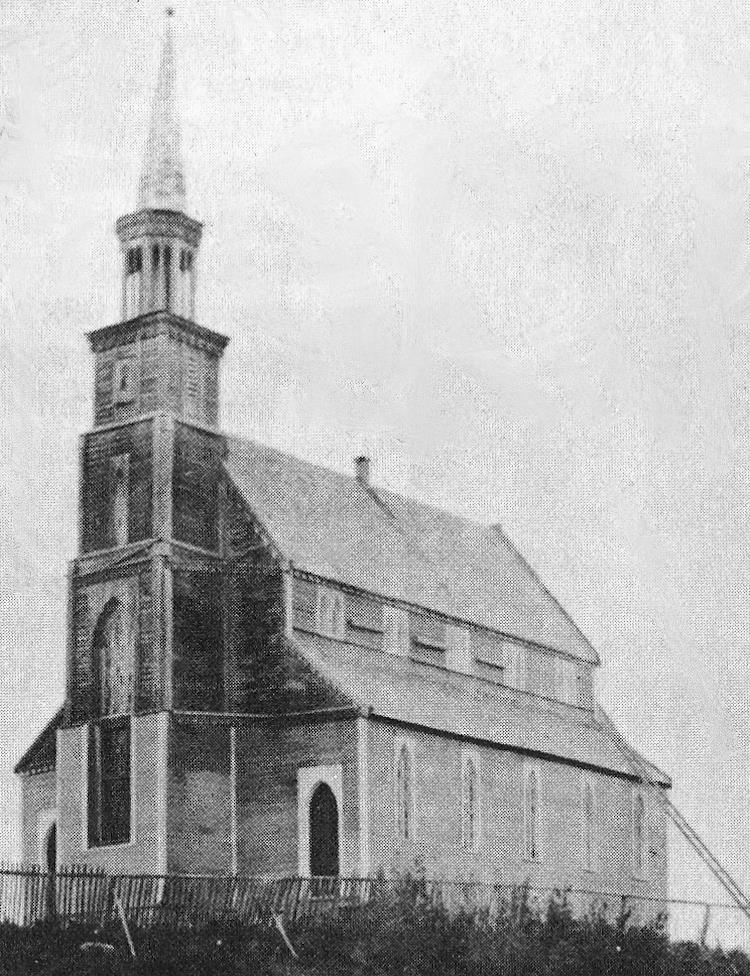
Holy Trinity Church, Stanley Mission.
Thursday, 6th [April, 1871]. . . Daily morning and evening prayers [are held] in the church with exposition of a portion of God's word. . . . After service this evening I read the Lieutenant Governor's Proclamation respecting the transfer of the North West to Canada and explained to the people the altered prospects of the country and the necessity of being prepared for any changes that might be coming. I endeavoured to impress upon them that Christianity alone could preserve the remnants of their race from extinction. Easter Sunday, 9th [April, 1871] Large congregations at both services and I feel sure that many entered with soul and spirit into the services. At Holy Communion several were in tears. 67 partook and the offertory amounted to f10-11. I feel often discouraged at seeing the empty pews Sunday after Sunday while my people are away at the hunting grounds but a sabbath like this day makes up for many discouragements.
Rev. John Alexander Mackay
at Stanley Mission, journal 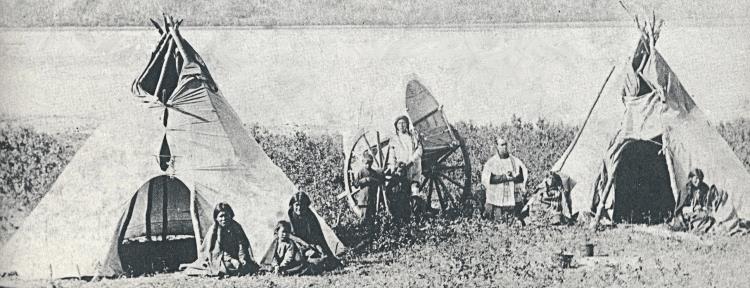
Church in the wilderness, Qu'Appelle Mission, no date.
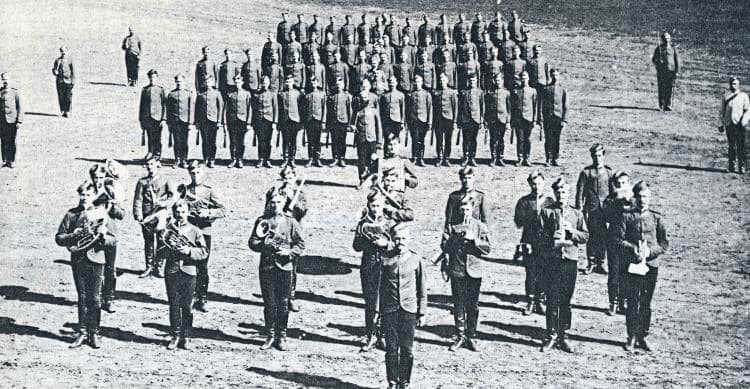
Drill order parade, North-West Mounted Police barracks, Regina, 1890.
In 1870, Canada gained legal jurisdiction over the North-West. Three years later, the federal government created the North-West Mounted Police, to establish and maintain law and order in the recently acquired territories. The force was able to achieve good relations with the Indian people and to protect them and the white settlers from lawless elements. By their presence, the police also helped to establish Canadian sovereignty in the area. In addition, they assisted with the negotiation of a series of Indian treaties, through which the federal government hoped to assure a peaceful transition to agricultural settlement. The Mounted Police march in the streets and make a fine soldierly appearance. They are drilled. They practice firing at a mark. In a word they are being kept in a state of readiness for duty and the public is therefore getting value for the money spent on them.
Regina Leader,
25 October 1883 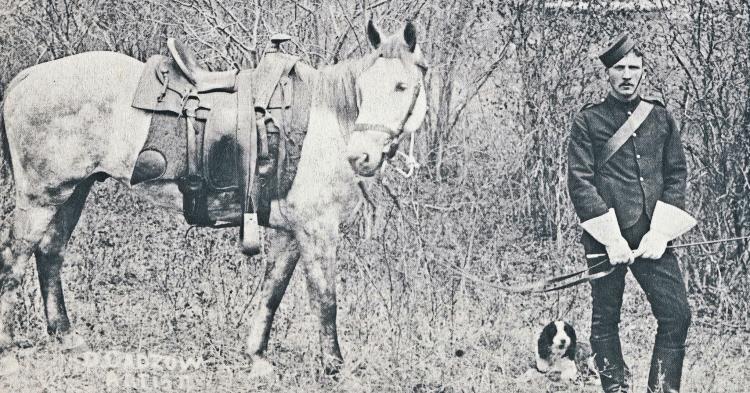
North-West Mounted Police constable,
Battleford district, about 1880. The [Mounted Police] came up and down the trail quite often in winter as well as summer. They nearly always stopped to see how the settlers were getting along, and if anything unusual was happening. We were always glad to see them and have a little talk to find out what was happening in the outside world.
Niels Gording,
Remembrances 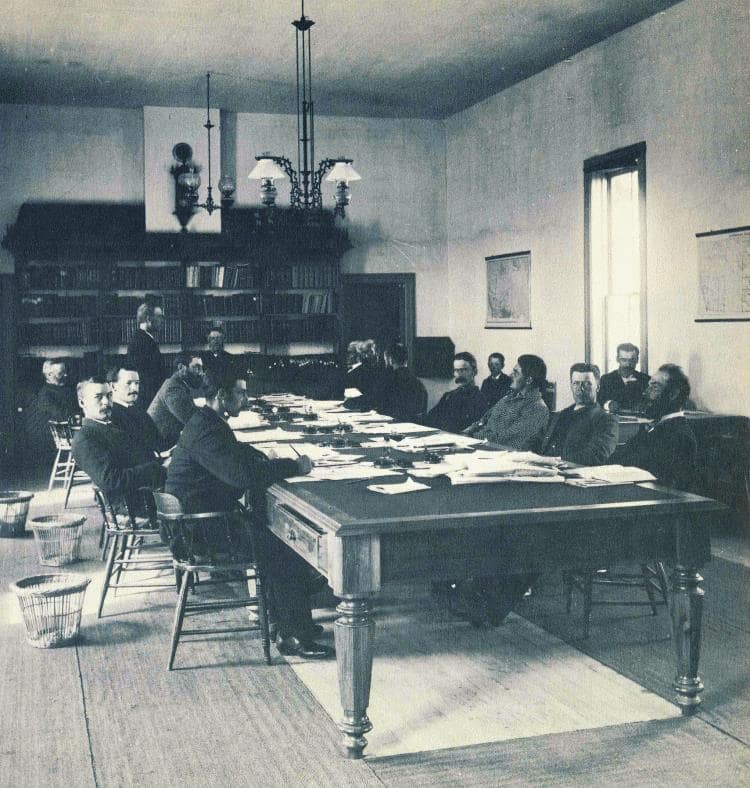
The North-West Territories Council, Regina, 1884.
Lieutenant-Governor Dewdney, who is at the head of the table in this picture, was appointed by the federal government and responsible to it. He was assisted by a council which in 1884 consisted of six members appointed by the government of Canada and eight elected members. Left side: C. B. Rouleau (standing), H. Richardson, D. H. Macdowall, Wm. White, J. H. Ross, J. G. Turriff; right side: Pascal Breland, J. F. Macleod, A. G. Irvine, F. Oliver, J. C. C. Hamilton, T. W. Jackson, J. D. Geddes. At the table to the right is A. E. Forget, clerk of the council. Absent: Hayter Reed. 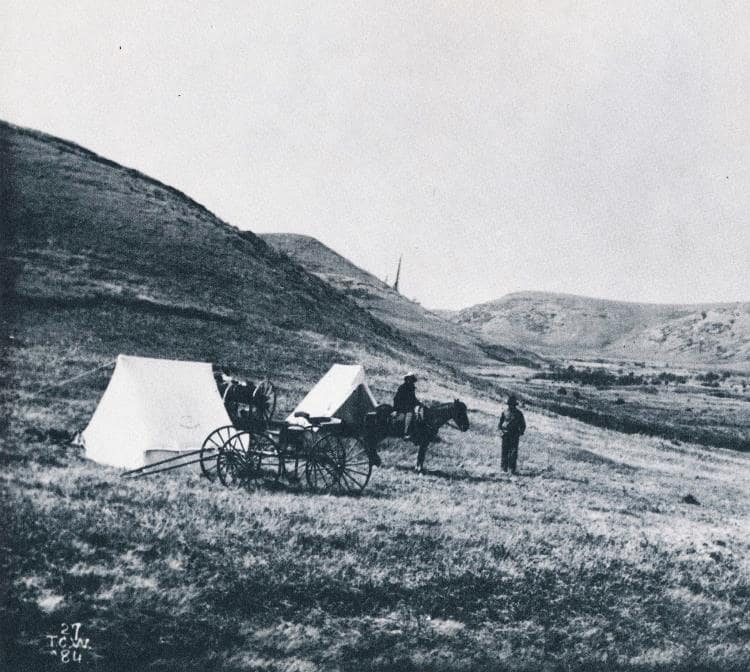
Geological Survey camp, Cold Water Coulee,
Swift Current Creek, 1884. The Geological Survey of Canada was formed in 1842 to explore Canada. Its work included describing geological features, collecting specimens, fixing longitudes and latitudes, and publishing resource information. In 1868, the survey's work was extended to all the provinces of the Dominion, and an annual allocation of funds was provided to defray expenses. By the mid-1880s, photography became an integral part of the geological work, capturing and preserving prairie landscape, people, and wildlife with an animation hitherto unknown. Thomas Chesmer Weston (1832-1910) undertook four journeys into western Canada during the 1880s, paying special attention to the collection of vertebrate fossils and Indian artifacts from the Cypress Hills region. All being ready we left Maple Creek at 12 noon, May 31 and struck off for the Cypress Hills, and our interesting fossil bone locality. . . . We made 18 miles that day and camped near a creek in close proximity to a large encampment of Blackfoot Indians who were engaged in collecting buffalo bones to be used for refining sugar and for fertilizing purposes. Continuing our journey the following morning, partly by trail and partly by compass, we reached our field of research 48 miles from Maple Creek, Sunday, June 2nd - a great verdant valley extending many miles in a north and south direction.
Thomas C. Weston,
reminiscences 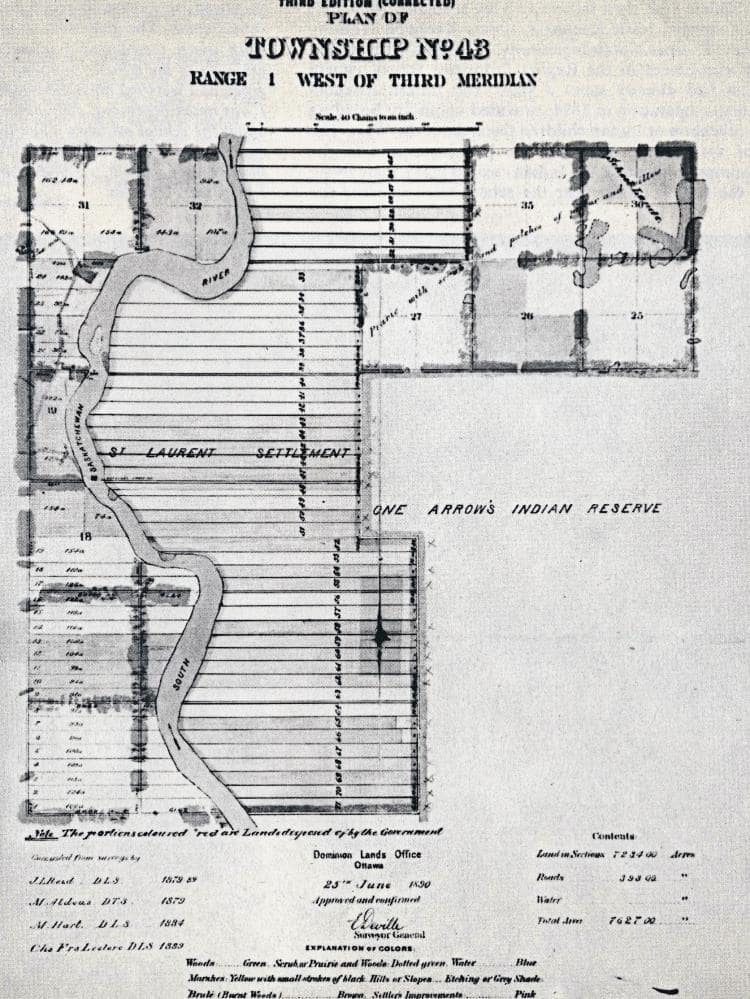
Plan of Township No. 43, Range 1,
West of the Third Meridian. By Orders-in-Council passed in 1869 and 1871 a system of surveys, which divided the land into townships containing thirty-six one-mile-square sections, was adopted for the lands in Manitoba and the North-West Territories. Most of the lands in Saskatchewan were surveyed according to these regulations, and the square sections shown on this plan were the usual pattern of survey. However, there were special exceptions. There were a few river-lot surveys as shown in this plan for the St. Laurent settlement. Lands for Indian reserves and Hudson's Bay Company reserves were also exceptions to the square-grid system of survey. 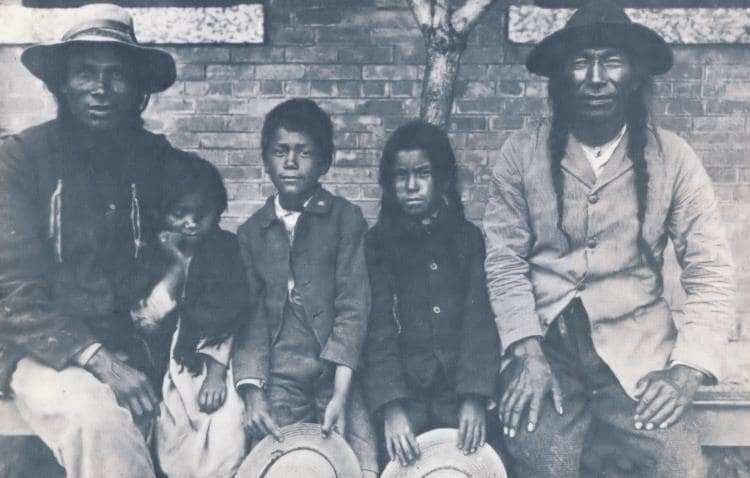
Indian children with their fathers
arriving at school, 1904. Left to right: James Keepness, Jessie Keepness, Jimmy Keepness, Tommy Notawasquitaway, Thomas Notawasquitaway. Jessie and Tommy had just arrived for enrollment in the Regina Industrial School, where Jimmy Keepness had already spent a year. The industrial-school system, which began operation in 1884, provided voluntary boarding schools for the education of Indian children throughout the West. The development of agricultural skills was the prime purpose of the schools. The assumption was that the Indians would make their living by farming in the future. Lands near the school were reserved for practical use; carpentry and harness - making were included in general farm classes. The girls were instructed in domestic skills. With much trepidation I allowed myself to be handed over to the principal of the school . . . I shed no tear, but the pain in my heart was great, as I watched my father walking away. He did not look back once. I was much depressed, and scarcely noticed the boys kicking a football about the school grounds. Then two who were my cousins, ran over and took charge of me. They had been in the school for more than a year, and they told me about it, persuading me to join in the game. In a short time, I forgot my troubles.
Edward Ahenakew, memoirs
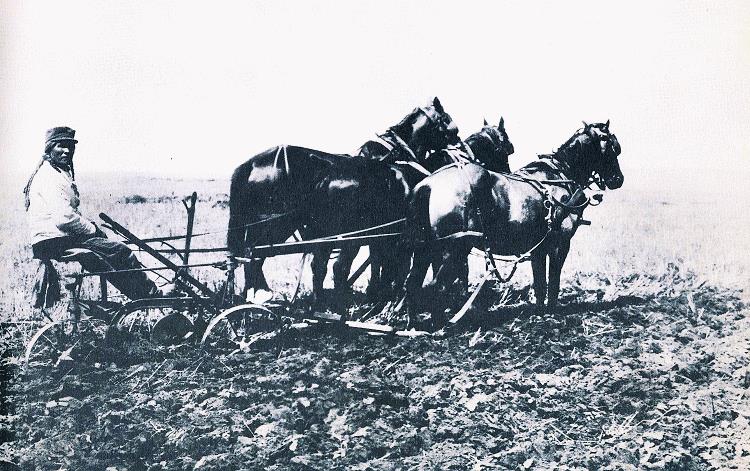
Indian ploughing on a reserve in western Canada,
place and date unknown. The great object of the Government is to turn the Indians of the prairies into farmers. Amidst many difficulties, it must be said from a survey of these reserves [Qu'Appelle area] that the work is advancing. . . . One Indian, whose farm was visited, had very nearly fifty acres of wheat. It was well put in and presented an excellent appearance. It will probably yield between 800 and 1200 bushels of grain. If anyone doubts the capability of the Indian, he has but to see this farm of a man who, ten years ago, lived by the chase to be convinced.
G. Bryce, 1885"
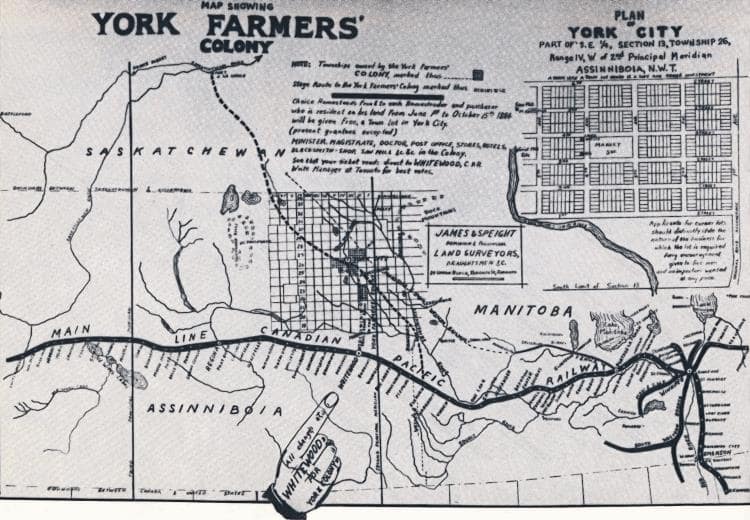
Advertisement for the York Farmers Colony.
Special regulations permitting the sale of lands to colonization companies were passed by the Dominion government in 1881 to encourage the settlement of western Canada. One of the companies receiving a grant of land was the York Farmers Colonization Company. The terms of the contract provided for a rebate of a portion of the sale price of the land to the company in return for establishing settlers. During the winter of 1882 advertisements such as the one shown here were circulated to recruit settlers. This company experienced modest successes initially, but failed for a number of reasons, including the North-West Rebellion and the lack of railway branch lines. Nonetheless, its enterprise laid the foundation for the city of Yorkton and the settlement in the surrounding district. 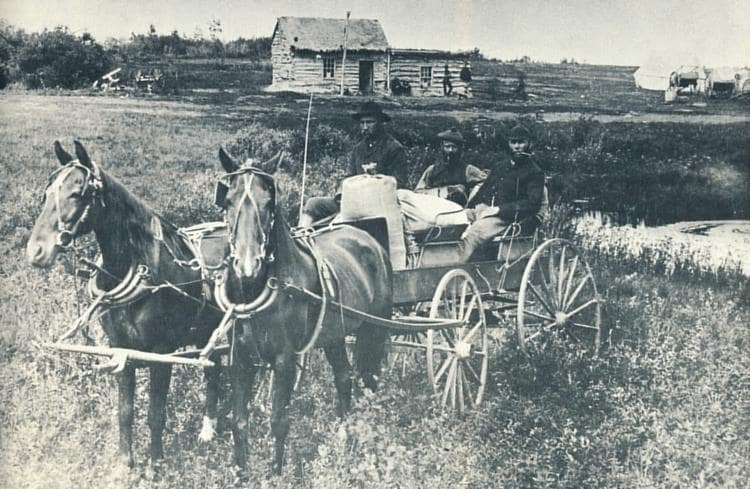
Amos Kinsey farm, Moosomin district,
about 1883. I am glad that you are all pleased to hear of my getting another 160 acres by pre-emption, for it really is a fine thing, and it means a great deal . . . half a section is just a nice cozy farm, and there is a good living in it for anybody, the independence of the thing is great . . . I do not think that we should set our heart too much upon vanishing wealth and vain riches. 1 believe that a man should follow the life in which his soul can obtain the most rest and peace, and health and vigour for the body and that is my aim, a good home is the top of my ambitions, and that is why I like the life, it is the independence of the thing. I have hardly known what it means to be sick since I struck the West and to live a hand in glove life with nature, the green grain growing and developing, the beautiful sunsets we witness here, and the clear starry nights, and above all, the grand immensity of the general surroundings illustrate the Almighty power of our creator, and humbles the pride of man, which sinks into nothingness before such vastness. . . .
G. W. V. Yonge,
Reminiscences of an early farmer 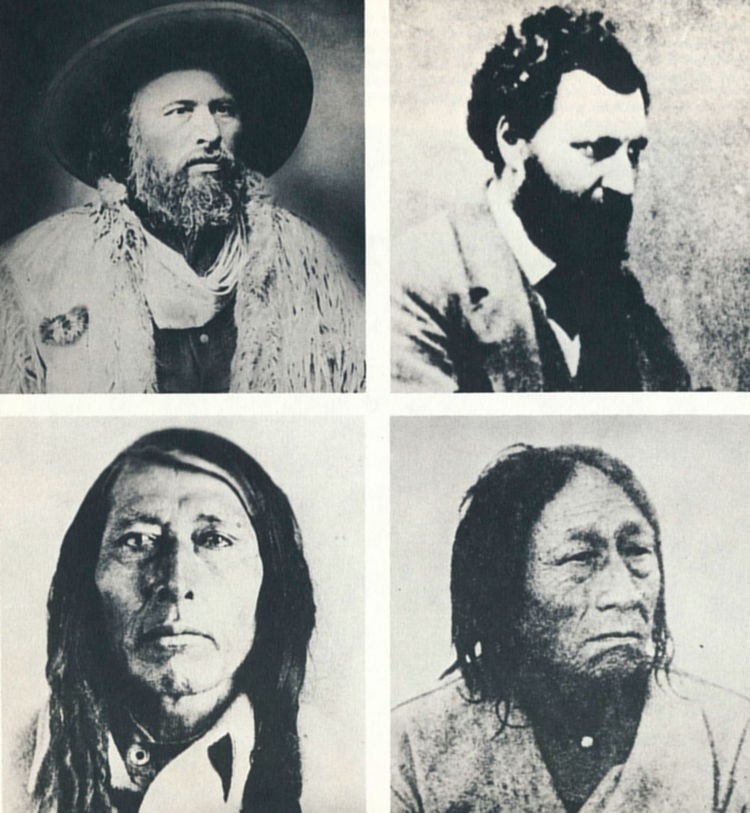
The four men pictured above were the leaders of the Indians
and Metis who took part in the rebellion. Gabriel Dumont Upper left, Louis Riel Upper right, Chief Poundmaker Lower left, Lower right Chief Big Bear. The building of the railway, the virtual extinction of the buffalo, and the growing tide of white immigration threatened the Indian and Metis way of life. The Metis sought assurance from the federal government that their rights and lands would be protected. When the government failed to respond to their petitions, the Metis people invited their leader Louis Riel to return from the United States to help them seek redress of their grievances. Riel's attempt to force negotiations by taking up arms and forming a provisional government led to military conflict. The Canadian government rushed troops to the West and defeated the Metis forces. Louis Riel was subsequently tried and executed, and other leaders were imprisoned. 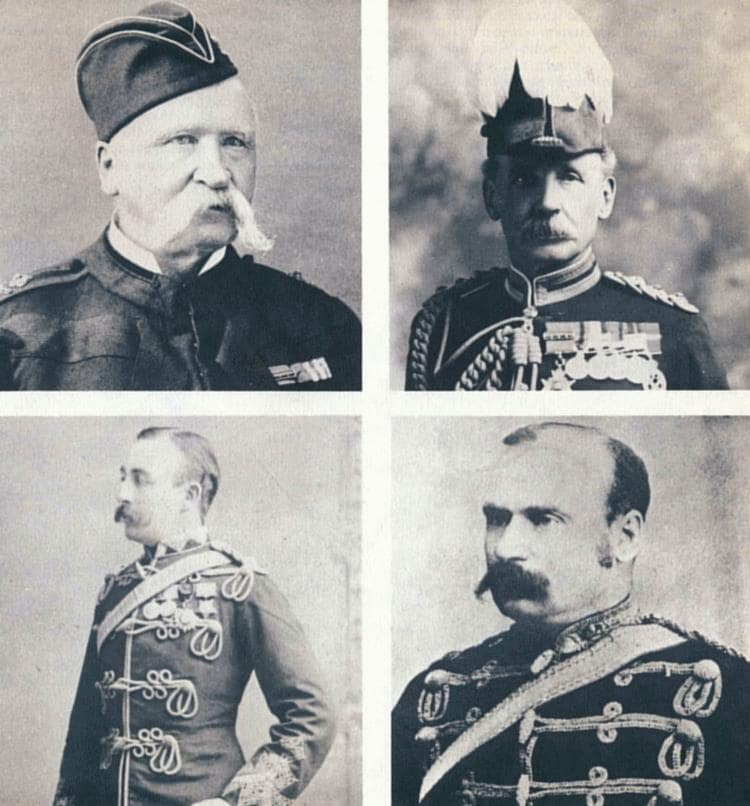
These were the Officers of the militia and police.
Upper left, Major-General F. Middleton,
commander of the Canadian Militia and the North-West Field Force Upper right, Lieutenant-Colonel W. D. Otter, Commander of the Battleford Column Lower left, Lord Melgund, Chief of Staff, North-West Field Force Lower right, Superintendent L. F. N. Crozier, North-West Mounted Police. 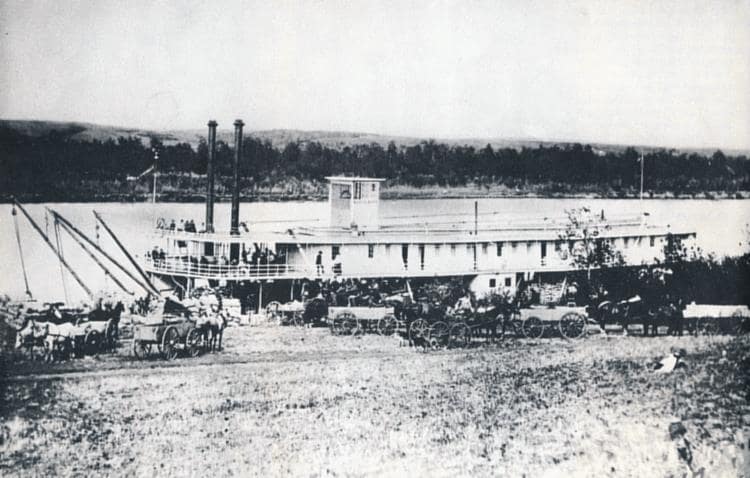
The Steamer North West
at Battleford, 1885. Steamboats were first used on the Saskatchewan River in the 1870s and were an important link in the inland transportation system until displaced by the railroads in the 1890s. During the North-West Rebellion, steamers were used effectively to move men and supplies but the attempt to use the steamboat Northcote as part of the attack force at Batoche was a failure. The steamer North West arrived last evening at 8:15 o'clock, having left Prince Albert on Friday morning at 11. She had on board Gen. Middleton and staff, the Midland Battalion under Col. Williams, and Boulton's Mounted Infantry, one gun of "A" Battery, and Capt. Howard and his Gatling gun. Captain Sheets was in command of the steamer, and having no pilot but himself, the double duty of wheel man and commander devolved on him.
Saskatchewan Herald,
25 May 1885 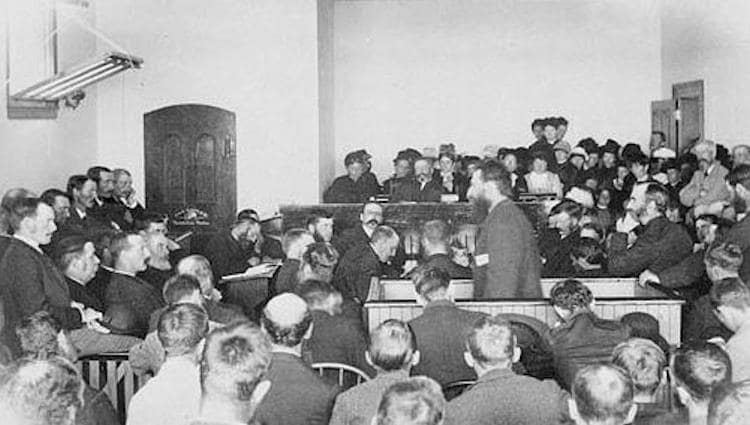
The trial of Louis Riel,
Regina, 1885. On 6 July 1885, Louis Riel was formally charged with treason. Found guilty, he was hanged on 16 November 1885. His trial and execution had an important effect on Canadian politics as Riel became a symbol of the division between the major ethnic and racial groups in Canada. 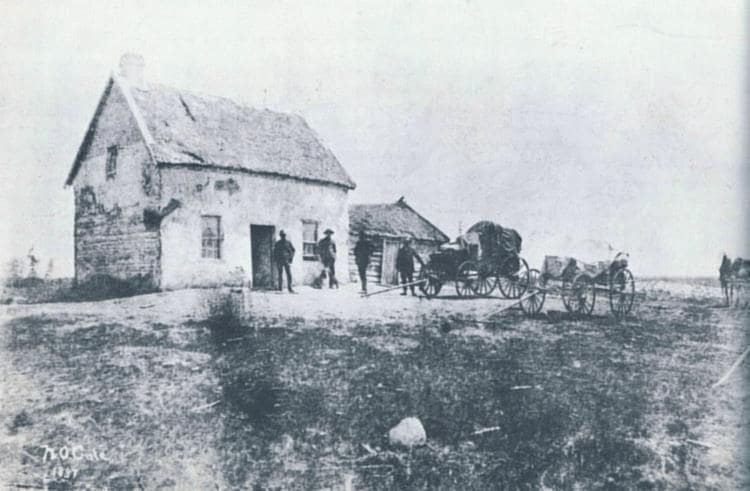
Half-Breed Claims Commission staff
at the Trading House Touchwood Hills, 1887. The commission was established to investigate and try to satisfy the land claims of half-breeds resident in the North-West Territories prior to 15 July 1870. It was authorized to enumerate the half-breeds and grant, where applicable, land or money scrip for the extinguishment of aboriginal title. The commission headed by R. Goulet and N. Omer Cote, held sittings at sixteen places throughout the North-West Territories and Manitoba, and investigated 1,414 claims. 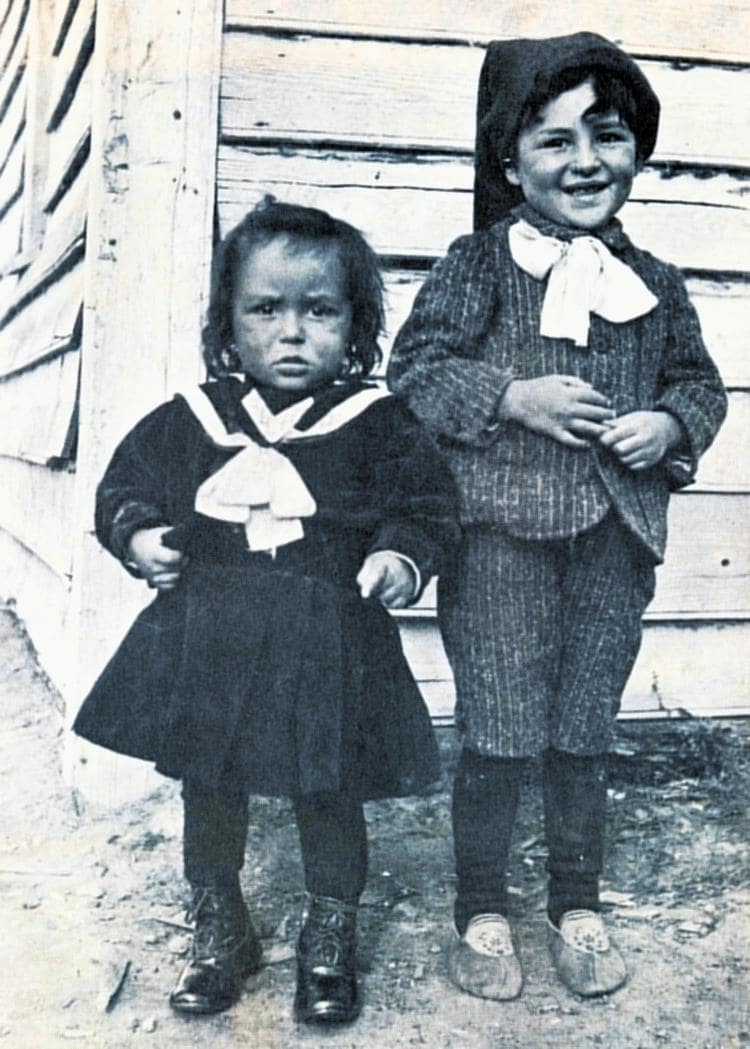
Metis Children at Ile-a-la-Crosse,
Saskatchewan, 1908. |
| Deep River Fur Farm |
| Deep River Trapping Page |
| Deep River Fishing Page |
| My Norwegian Roots |
| Early Mink People Canada - Bowness |
| The Manager's Tale - Hugh Ross |
| Sakitawak Bi-Centennial - 200 Yrs. |
| Lost Land of the Caribou - Ed Theriau |
| The History of Buffalo Narrows |
| Hugh (Lefty) McLeod, Bush Pilot |
| George Greening, Bush Pilot |
| Timber Trails - History of Big River |
| Joe Anstett, Trapper |
| Bill Windrum, Bush Pilot |
| Face the North Wind - Art Karas |
| North to Cree Lake - Art Karas |
| Look at the Past - History Dore Lake |
| George Abbott Family History |
| These Are The Prairies |
| William A. A. Jay, Trapper |
| John Hedlund, Trapper |
| Deep River Photo Gallery |
| Cyril Mahoney, Trapper |
| Saskatchewan Pictorial History |
| Who's Who in furs - 1956 |
| Century in the Making - Big River |
| Wings Beyond Road's End |
| The Northern Trapper, 1923 |
| My Various Links Page |
| Ron Clancy, Author |
| Roman Catholic Church - 1849 |
| Frontier Characters - Ron Clancy |
| Northern Trader - Ron Clancy |
| Various Deep River Videos |
| How the Indians Used the Birch |
| Mink and Fish - Buffalo Narrows |
| Gold and Other Stories - Richards |
